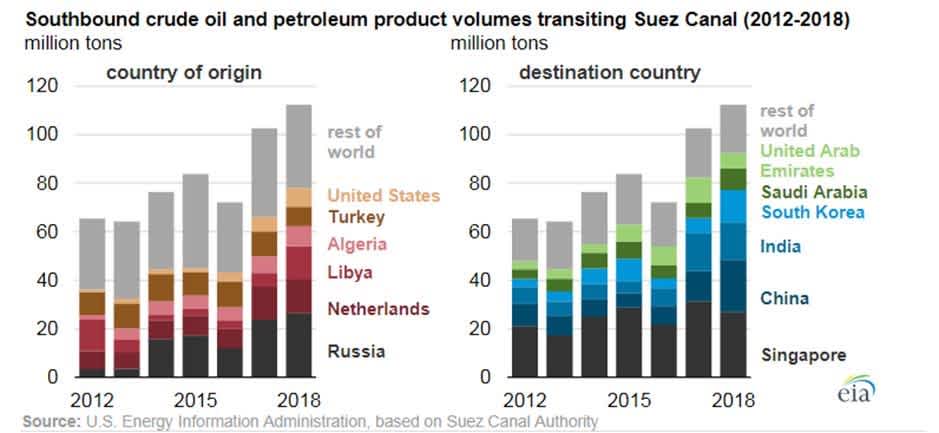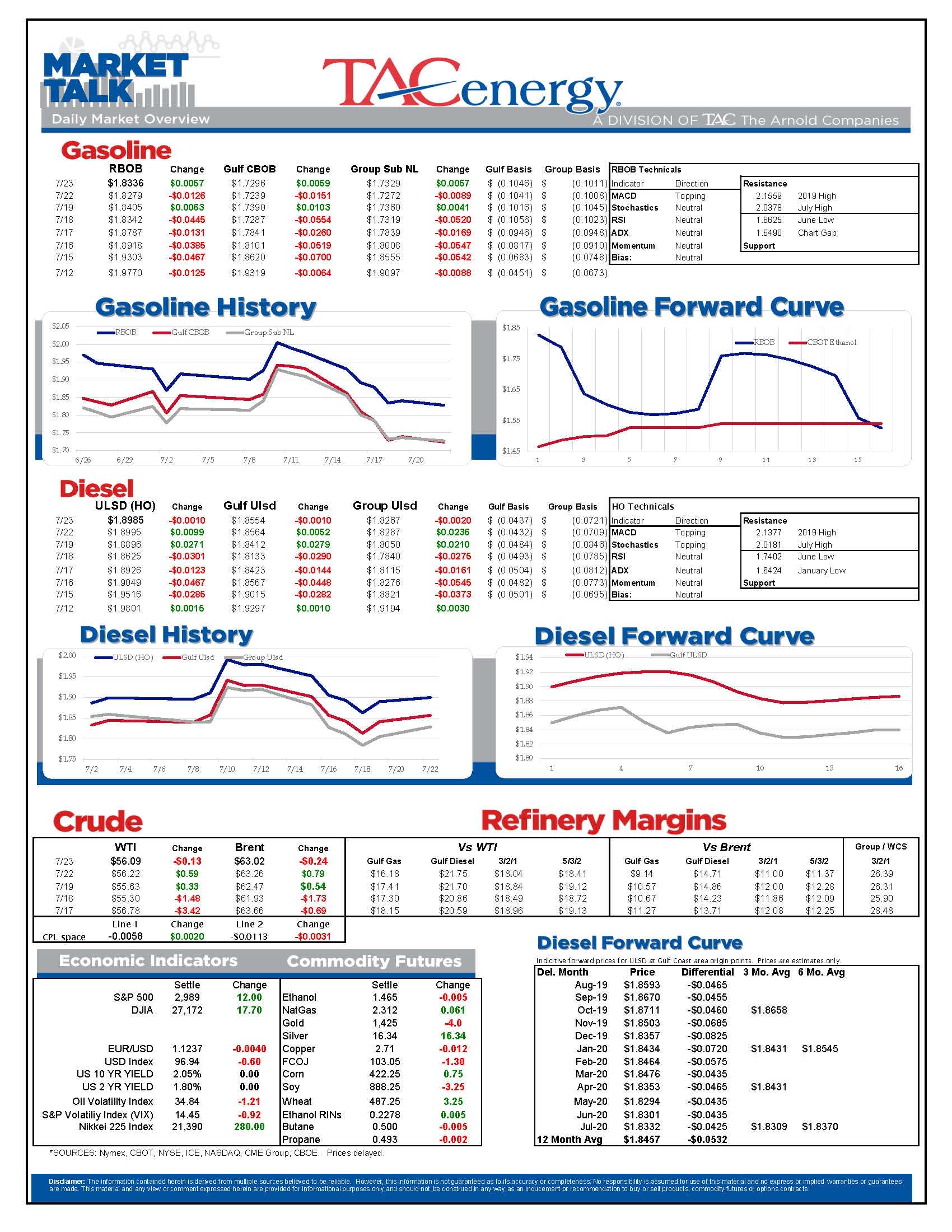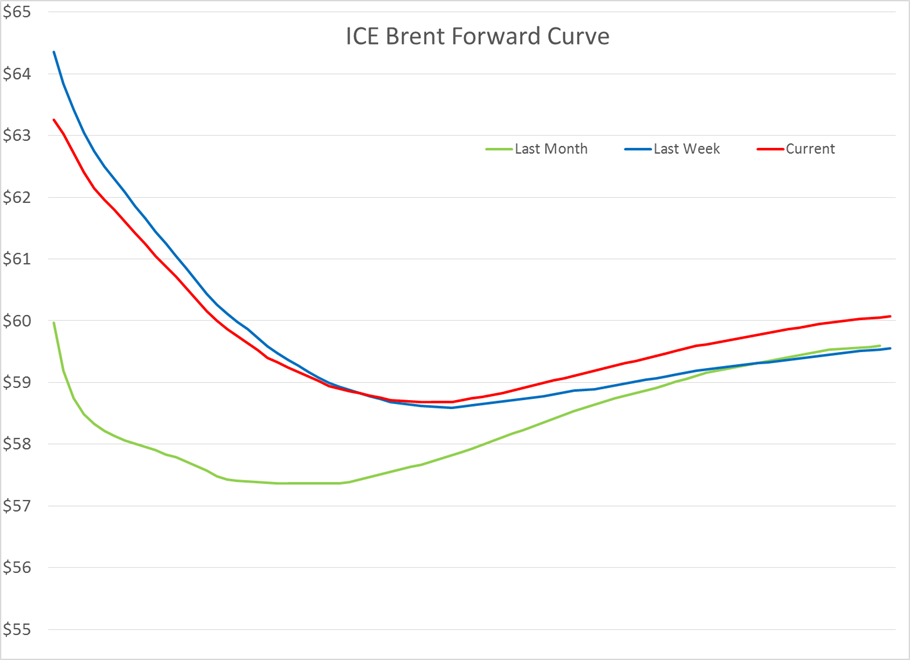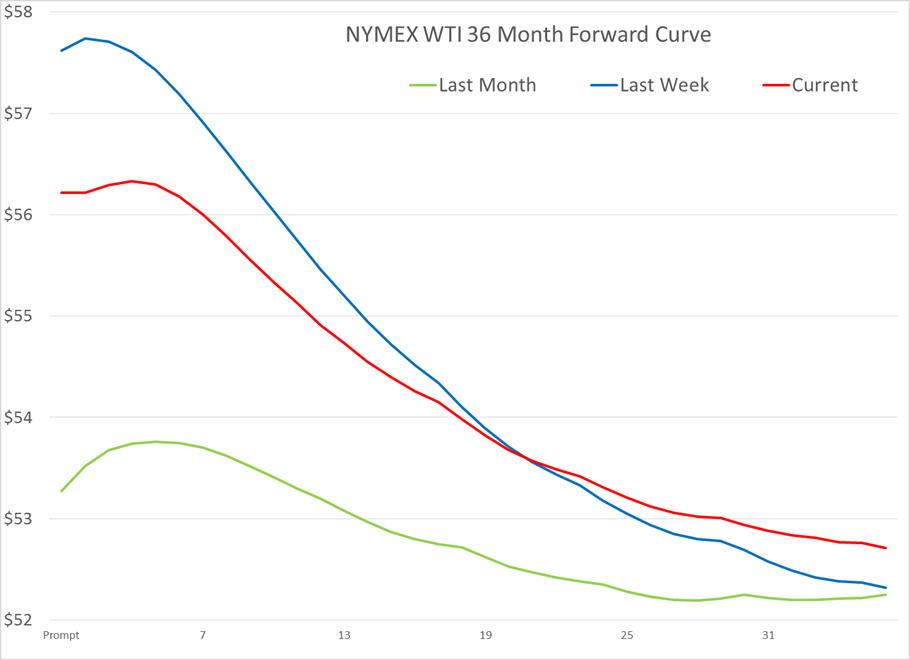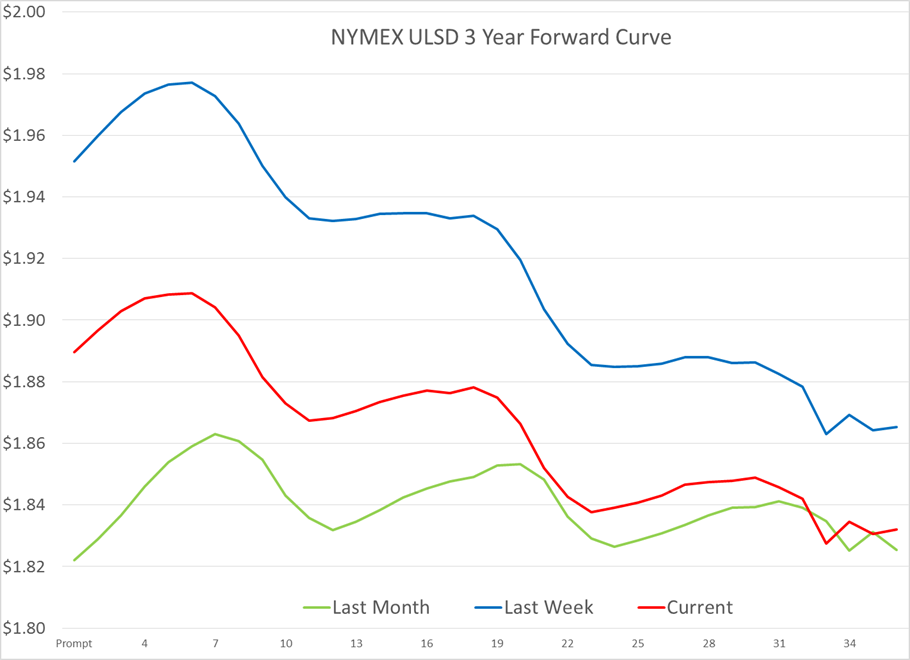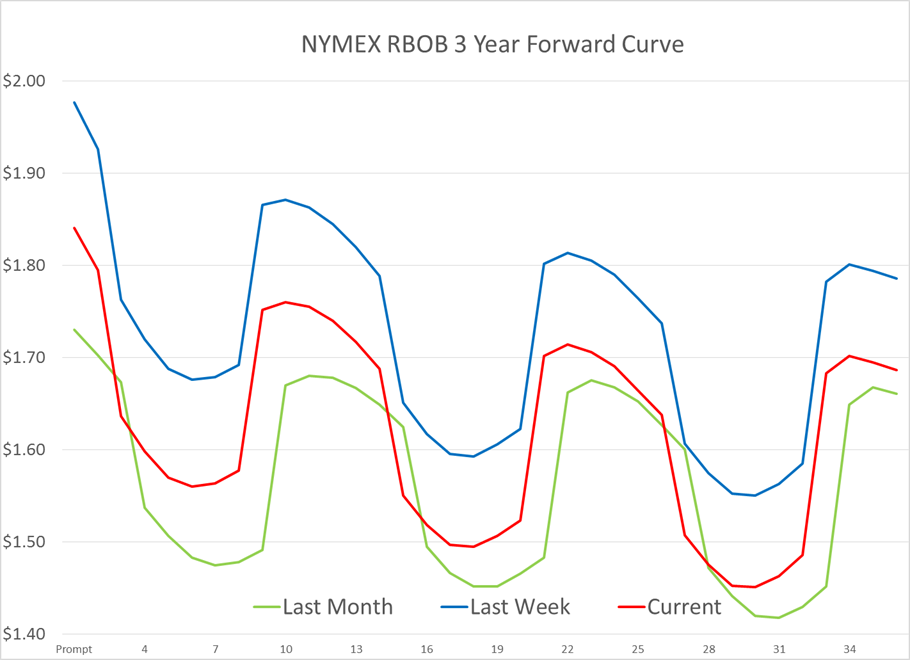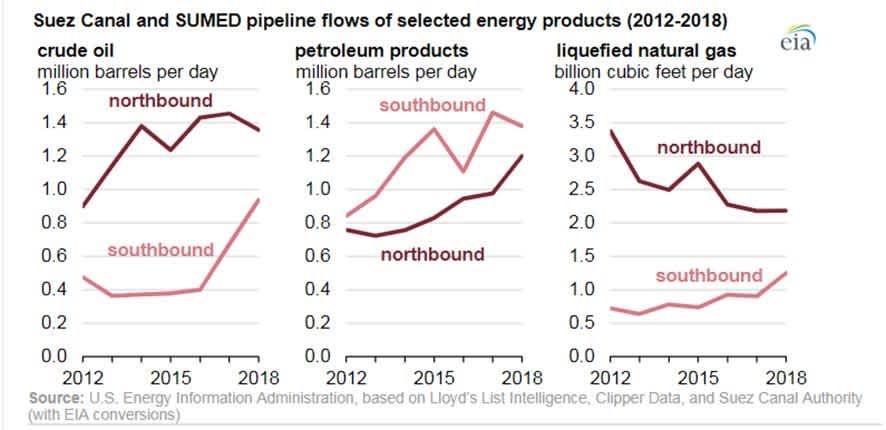Energy Futures Trading Sideways

Energy futures are trading sideways to start Tuesday’s session as the tensions with Iran near the world’s most important waterway seem to have cooled for the time being. A new prime minister has been chosen in the U.K., and it seems like the markets may be taking a wait-and-see approach to how he’ll handle the Iranian seizure of a British ship last week.
RBOB gasoline futures are moving opposite of diesel and crude oil for a 2nd straight day, in what appears to be a bit of confusion over the PES bankruptcy, and whether or not the debtor in possession financing arrangement means the plant could reopen again at some point.
As the forward curve charts below show, futures markets remain primarily in a state of backwardation for most of the next several years, with near-term supply concerns fading compared to new capacity expectations and demand concerns. The notable exceptions are the contango in ULSD through year end – when the new IMO rules take effect – and WTI holding a small carry in the front few months as production holds near record highs.
As predicted, Chinese imports of Iranian crude have become the latest hot topic in trade talks, after a Chinese company was sanctioned for unauthorized purchases. It seems unlikely this will have an immediate impact on prices, but is a reminder of the simmering tensions with both countries.
The IEA published a note Monday detailing the emergency stockpiles of oil held by participating countries around the world that are “large enough to cover any disruptions in oil supply from the Strait of Hormuz for an extended period.” The agency also noted that global supplies are above average, which should help cushion the impact if shipping through the strait is disrupted.
The EIA meanwhile published a note this morning detailing how another key shipping bottleneck, the Suez Canal, has seen its activity shift in the past few years as the US and Russia become bigger players in the global petroleum markets.
News & Views
View All
Energy Futures Are Caught Up In Headline Tug-O-War This Morning
Energy futures are caught up in headline tug-o-war this morning with Canadian oil production concerns and a positive US GDP report trying to push prices higher while sinking Chinese demand worries and Gaza ceasefire hopes are applying downward pressure. The latter two seem to be favored more so far this morning with WTI and Brent crude oil futures down ~45 cents per barrel, while gasoline and diesel prices are down about half a cent and two cents, respectively.
No news is good news? Chicago gasoline prices dropped nearly 30 cents yesterday, despite there not being any update on Exxon’s Joliet refinery after further damage was discovered Wednesday. Its tough to say if traders have realized the supply situation isn’t as bad as originally thought or if this historically volatile market is just being itself (aka ‘Chicago being Chicago’).
The rain isn’t letting up along the Texas Gulf Coast today and is forecasted to carry on through the weekend. While much of the greater Houston area is under flood watch, only two refineries are within the (more serious) flood warning area: Marathon’s Galveston Bay and Valero’s Texas City refineries. However, notification that more work is needed at Phillip’s 66 Borger refinery (up in the panhandle) is the only filing we’ve seen come through the TECQ, so far.
Premiums over the tariff on Colonial’s Line 1 (aka linespace value) returned to zero yesterday, and actually traded in the negatives, after its extended run of positive values atypical of this time of year. Line 1’s counterpart, Line 2, which carries distillates from Houston to Greensboro NC, has traded at a discount so far this year, due to the healthy, if not over-, supply of diesel along the eastern seaboard.
Click here to download a PDF of today's TACenergy Market Talk.

WTI And Brent Crude Oil Futures Are Trading ~$1.50 Per Barrel Lower In Pre-Market Trading
The across-the-board drawdown in national energy stockpiles, as reported by the Department of Energy yesterday, stoked bullish sentiment Wednesday and prompt month gasoline, diesel, and crude oil futures published gains on the day. Those gains are being given back this morning.
The surprise rate cut by the People’s Bank of China is being blamed for the selling we are seeing in energy markets this morning. While the interest rate drop in both short- and medium-term loans won’t likely affect energy prices outright, the concern lies in the overall economic health of the world’s second largest economy and crude oil consumer. Prompt month WTI and Brent crude oil futures are trading ~$1.50 per barrel lower in pre-market trading, gasoline and diesel are following suit, shaving off .0400-.0450 per gallon.
Chicagoland RBOB has maintained its 60-cent premium over New York prices through this morning and shows no sign of coming down any time soon. Quite the opposite in fact: the storm damage, which knocked Exxon Mobil’s Joliet refinery offline on 7/15, seems to be more extensive than initially thought, potentially extending the repair time and pushing back the expected return date.
There are three main refineries that feed the Chicago market, the impact from one of them shutting down abruptly can be seen in the charts derived from aforementioned data published by the DOE. Refinery throughput in PADD 2 dropped 183,000 barrels per day, driving gasoline stockpiles in the area down to a new 5-year seasonal low.
While it seems all is quiet on the Atlantic front (for now), America’s Refineryland is forecasted to receive non-stop rain and thunderstorms for the next four days. While it may not be as dramatic as a hurricane, flooding and power outages can shut down refineries, and cities for that matter, all the same, as we learned from Beryl.

